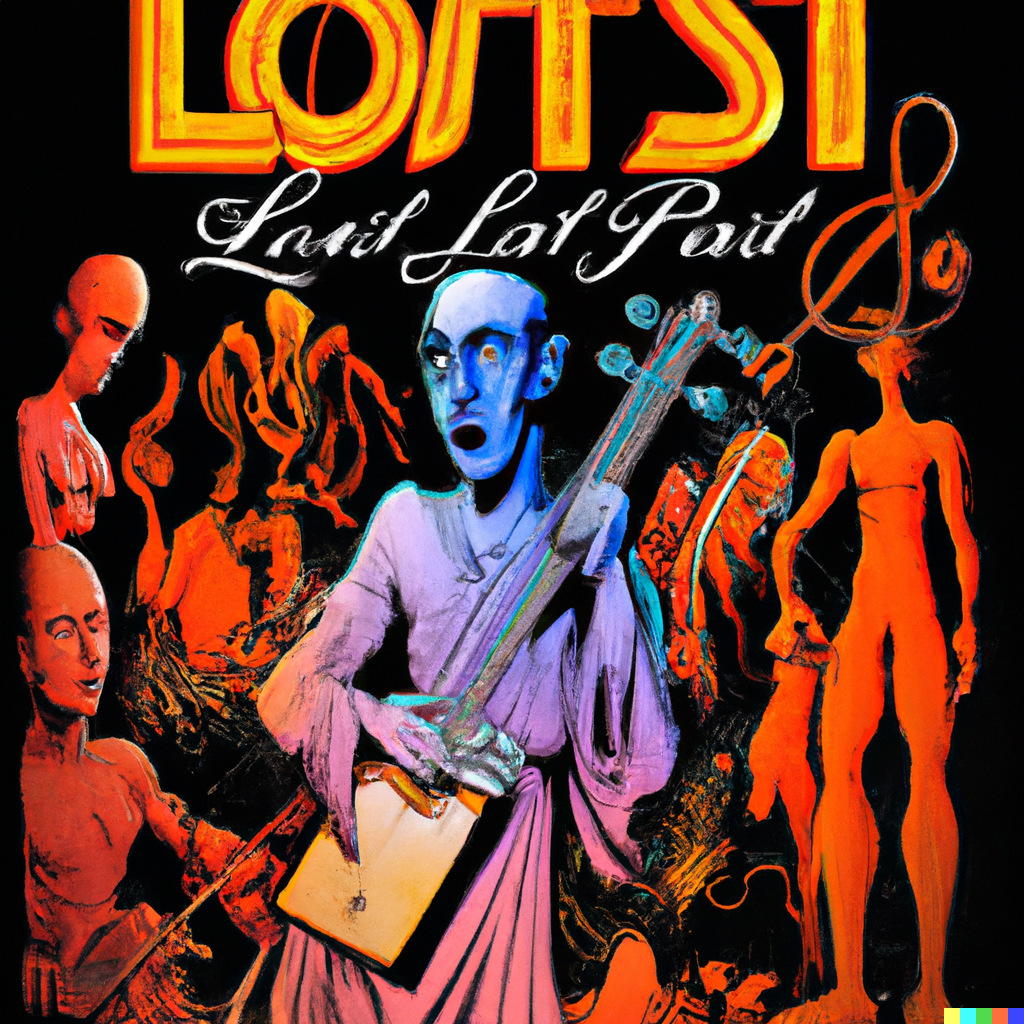
The protagonist, a musician, struggling with writer's block and personal issues, comes across an old, seemingly abandoned music shop near a park. The proprietor of the shop is a strange, old man who lives in his van behind the shop.
He discovers an instrument among the old man's wares and is drawn to it. when played, the instrument intoxicates the player and distorts his perspective on the world around him, and the people he witnesses. He buys the instrument and leaves with it, barely able to pay the old man any heed as he leaves with his new found obsession.
When he researches the instrument it is revealed that the previous owner had spent the last 40 years of his life doing nothing but playing the instrument alone in a shack in the woods. This is revealed through a diary that is found in the case that the instrument came in. in the diary is the story of the beckoning fourth of this power to intoxicate, but the danger that comes with it is also being described. The diary becomes disjointed, and the man writing it is no longer coherent enough to finish his sentences, but we do find out that his relationship with the instrument has become a source of peril for his family and thus it is required of him to get rid of the instrument. The diary warns of the dangers of the instrument's intoxicating power and the harm it can cause to those around the player.
The protagonist returns to the old man's shop. The old man who is a skilled instrument maker, reveals that he knew the previous owner of the instrument and has been trying to prevent it from falling into the wrong hands. he intimates that he has faith in the protagonist, and his ability to train the instrument to serve him and his family.
The protagonist becomes obsessed with the instrument and begins playing it all the time. He starts to notice strange occurrences happening around him and begins to have nightmares. As he delves deeper into the history of the instrument, he discovers that the previous owner's family had all died under mysterious circumstances.
One day, while playing the instrument, the protagonist enters a trance-like state and sees a terrifying figure beckoning him to continue playing.
The protagonist's paranoia and obsession with the instrument start to affect his personal relationships. The old man warns the protagonist that he must destroy the instrument before it destroys him and his loved ones.
He realizes that the instrument is cursed and must be destroyed to protect his loved ones.
In a climactic scene, the protagonist confronts the instrument's hold on him and ultimately chooses to sacrifice his own well-being to ensure the safety of his family.
The protagonist decides to take the instrument to a remote location to destroy it, but he is followed by the haunting presence of the old man. He battles the curse in a frenzied struggle and ultimately destroys the instrument, but not without suffering serious injuries.
After he destroys the instrument, he seems to be better, but his family confront him with the fact that he's been sleeping all day long for the last three days. When they confront him with that, he has a flash of insight and realizes what has been going on. during those periods of sleep a second instrument, that he unwittingly built in his intoxication has been controlling his dreams. The instrument is locked in a case under his bed. This instrument was built during the period of weeks that he was obsessively playing the first instrument and struggling with his obsession with it. It is only during the flash of insight that it is revealed to the audience that he had also built the second instrument.
The protagonist realizes that the curse will continue to haunt him and his family even after the instrument is destroyed. He makes a desperate decision to protect them and sacrifices himself in a final act of heroism, breaking the curse and saving his loved ones.
The movie ends with the protagonist's family laying flowers on his grave, and a final shot of the destroyed instrument in the background. The camera then pans out to reveal the haunting figure of the old man disappearing into the forest, leaving the audience to wonder if the curse has truly been lifted.
Total Budget: $500 (tentative)
Besides a screenplay and a script, the following elements need to be outlined to make the film a reality:
Thank you for considering joining our low-budget film project. We appreciate your time and interest in helping bring "Heirloom's Burden" to life.
We are currently in the early stages of planning our film project and are looking for passionate individuals who are interested in contributing their time, skills, or resources to help bring "Heirloom's Burden" to life. There are various ways to get involved:
If you are interested in getting involved or have any questions, please don't hesitate to contact us. We appreciate your support and look forward to collaborating with you on this exciting project!